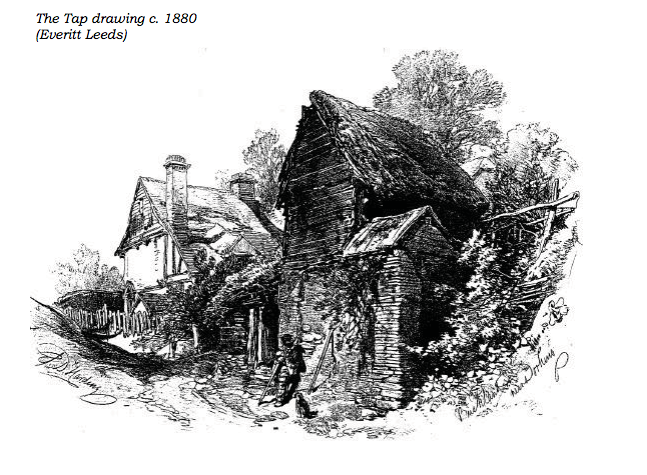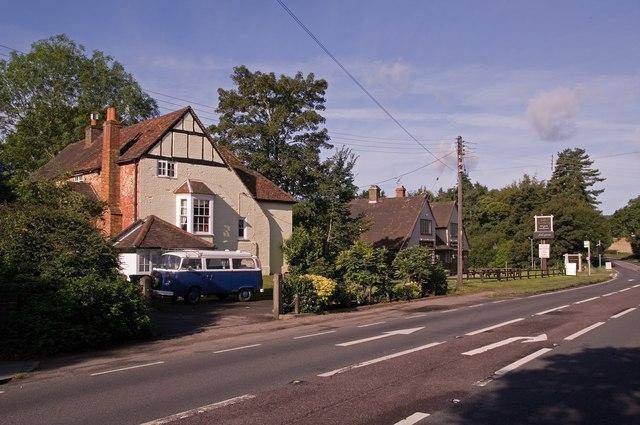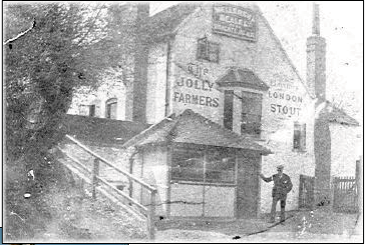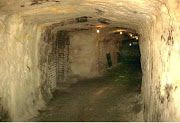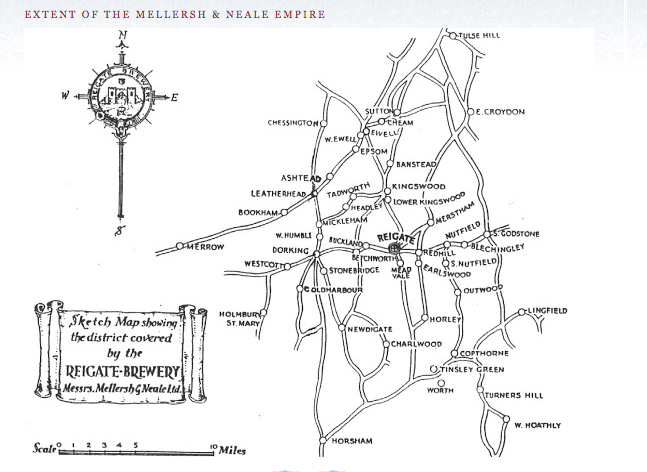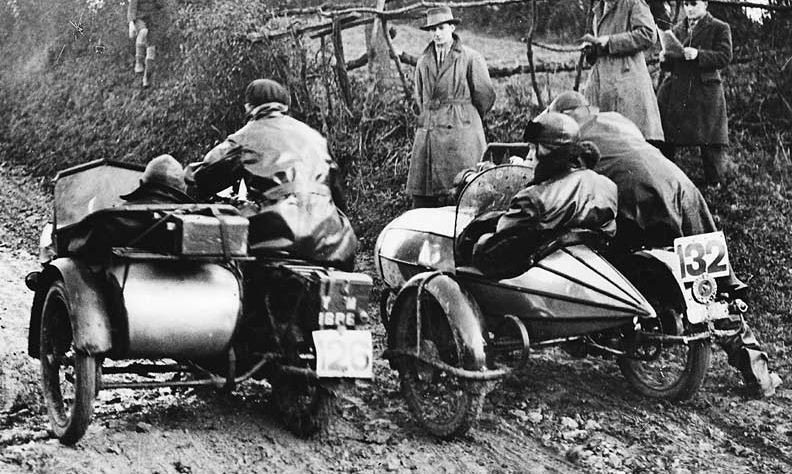Like many English pubs, the Pheasant in Buckland has seen several name changes over the many hundreds of years it's been looking after locals and travellers. The Pheasant was first named 'The Tap' in the late 18th century, then became The Jolly Farmers, and is now re-born as the Pheasant, in reference to a previous landowner, the Earl of Arundel, who in the 16th century complained about the general poaching of pheasants on his estate, which was greatly displeasing to him, but no doubt helped nourish the local community.
The earliest record of the deep past of the Pheasant comes from the date 1766, stamped into several of the bricks of the adjacent cottage. This building, now called Jolly Farmers Cottage, was in fact the site of the original tavern, The Tap, which is clearly marked in a map of 1801.
You can see the pub on the map in near the centre at the bottom of this map detail
The Tap was situated opposite Tap Woods, but whether the wood was named after the pub, or the pub named after the woods, is a moot point, though we can find no reference to 'Tap Woods' prior to the arrival of the pub.
The Tap in 1880, looking pretty Grimsky-Korsakov. Not very jolly.
At that time, anyone could sell beer or cider from their home, generally in their front parlour. The beer was usually served in jugs or dispensed directly from tapped wooden barrels on a table in the corner of the room.
Often profits were so high the owners were able to buy the house next door to live in, turning every room in their former home into bars and lounges for customers - and this would perhaps account for the re-location of premises to the purpose-built property next door.
This photograph shows the original Tap tavern to the left, with the new premises next door
The front of The Tap was actually at right angles to the road, and Duncan Ferris, author of the excellent 'Buckland 1000 - 2000', tells us that at some time in the evolution of The Tap, a small 'summer house' at road level was added to the gable of the house at the same level as the inside cellars, most likely by way of attracting customers, much as we might today add a conservatory.
You can read a pdf of Duncan Ferris' publication here.
In a tithe survey of 1846, the pub is called "The Tap House", and was owned by Neale Thomas, with Mary Truelove as landlord. We believe the pub was re-named The Jolly Farmers in the early 20th century. Throughout its history, census records show that the pub was generally a family business, often handed down through succeeding generations.
A photograph showing that the original Tap had been re-named The Jolly Farmers, before it moved next door...
In our fossicking through the historical laundry of the pub, we've came across a photograph of the Jolly Farmers from the early 20th century, where we couid just make out on the pub sign that it was owned by the Mellersh and Neale Brewery of Reigate.
Mellersh and Neale was a substantial and pretty expansionist operation with an estate that stretched right across the region, buying up and absorbing many existing smaller breweries, while along the way they brewed a bottled beer which they exported to the West Indies. Mellersh and Neale developed a large mineral water business way back in the 1930's, before it became cool, which turned over a substantial amount of money and was hived off as a separate business in its own right.
The brewery stored and matured their cask ales in caves below Reigate, which apparently gave the brewery a competitive edge as the ales were delivered in perfect condition.
A list of freeholds owned by the Mellersh and Neale Brewery indicate that The Tap was bought by the Mellersh and Neale Brewery on 5th September 1899, when the brewery acquired a tranche of pubs from Sisson Watts Neale shortly after the business became a Limited Company.
By the 1930's, the pub had moved into its current premises as The Jolly Farmers. Mrs Welfare, a local resident, recalls regular motor cycle and sidecar races in Tap Woods in the 1930s.
Mellersh and Neale were bought by Meux in 1938, and the family identity of the brewery and its pubs gradually dissipated. As you reap, so shall you sow. For a comprehensive history of Mellersh and Neale, please visit a highly researched and comprehensive website written by archaeologist Richard Symonds, to whom we are most indebted:
thebreweriesandpublichousesofsurrey.blogspot.co.uk
Local legend
Buckland is also the location of the Shag Brook, running near to the pub, which local legend says was the home of a monstrous horse (in some versions a gorilla), called the Buckland Shag. This beast would drag travellers from the nearby coaching road and devour them on the Shag Stone, a large boulder in the brook with a blood red vein of iron ore running through it.
The local parson, Willoughby Bertie, had the Shag Stone removed from the brook in 1757 and thrown from a cliff in Devon. The Buckland Shag then disappeared from local folklore.
The legend of the Buckland Shag has recently been revived by a local morris side,
The Buckland Shag Morris Men.
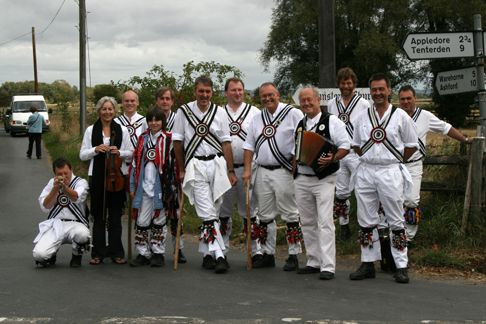
The Morris men's website tells us that at dawn on Mayday 1987, something appeared from the region of Buckland pond. Sightings were reported around Surrey every Friday evening through the summer, but only at selected licensed premises serving quality ales...
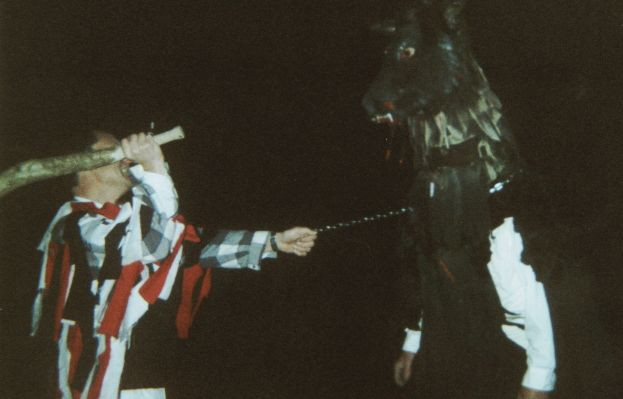
For the past two decades this pattern of sightings has continued, and we're keeping our eyes peeled...
bucklandshagmorrismen.com



